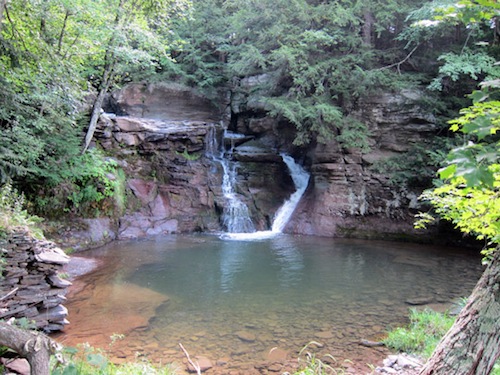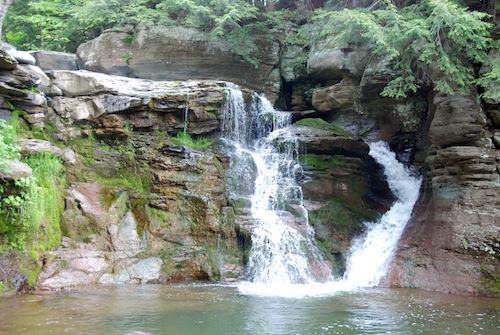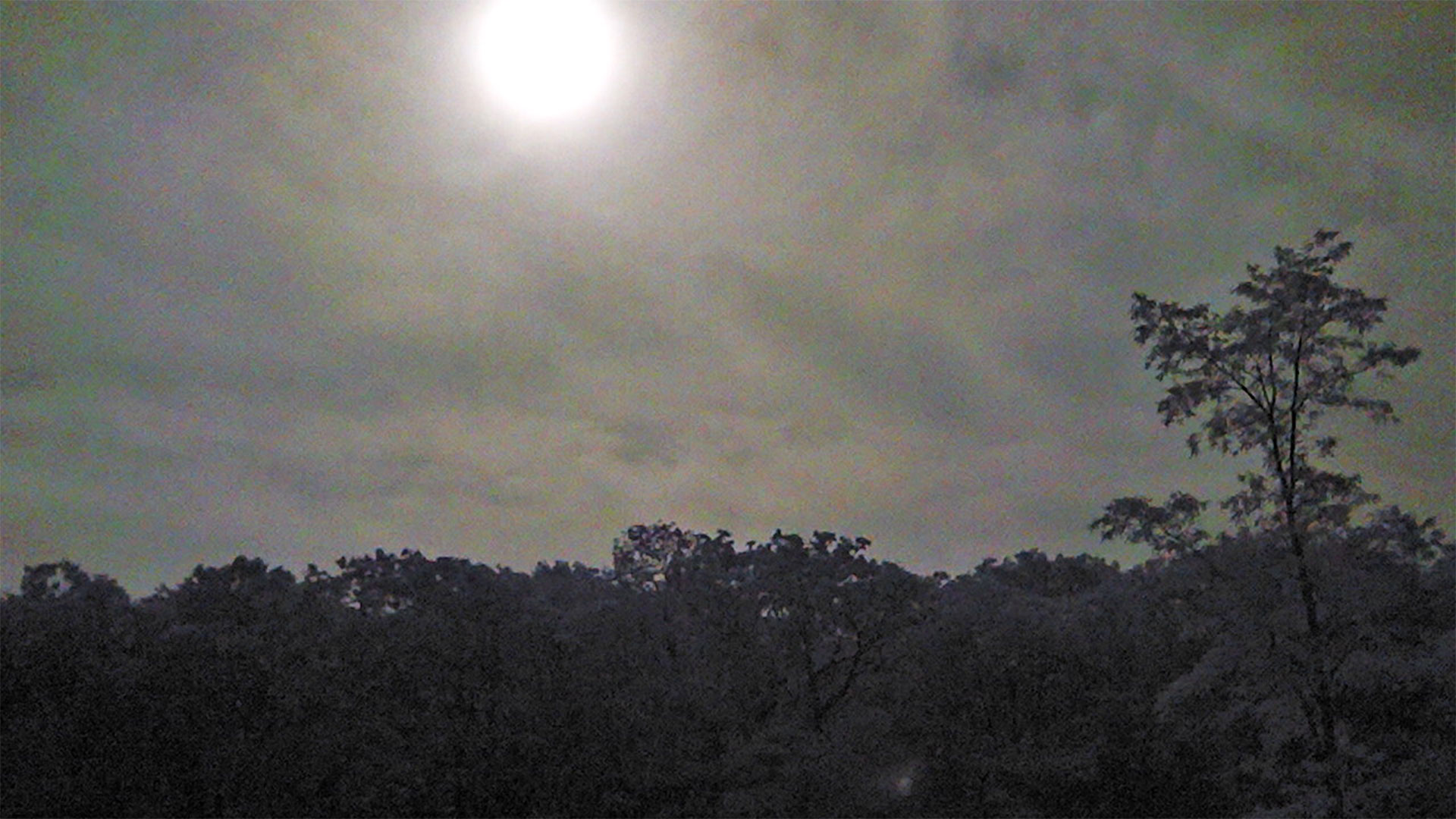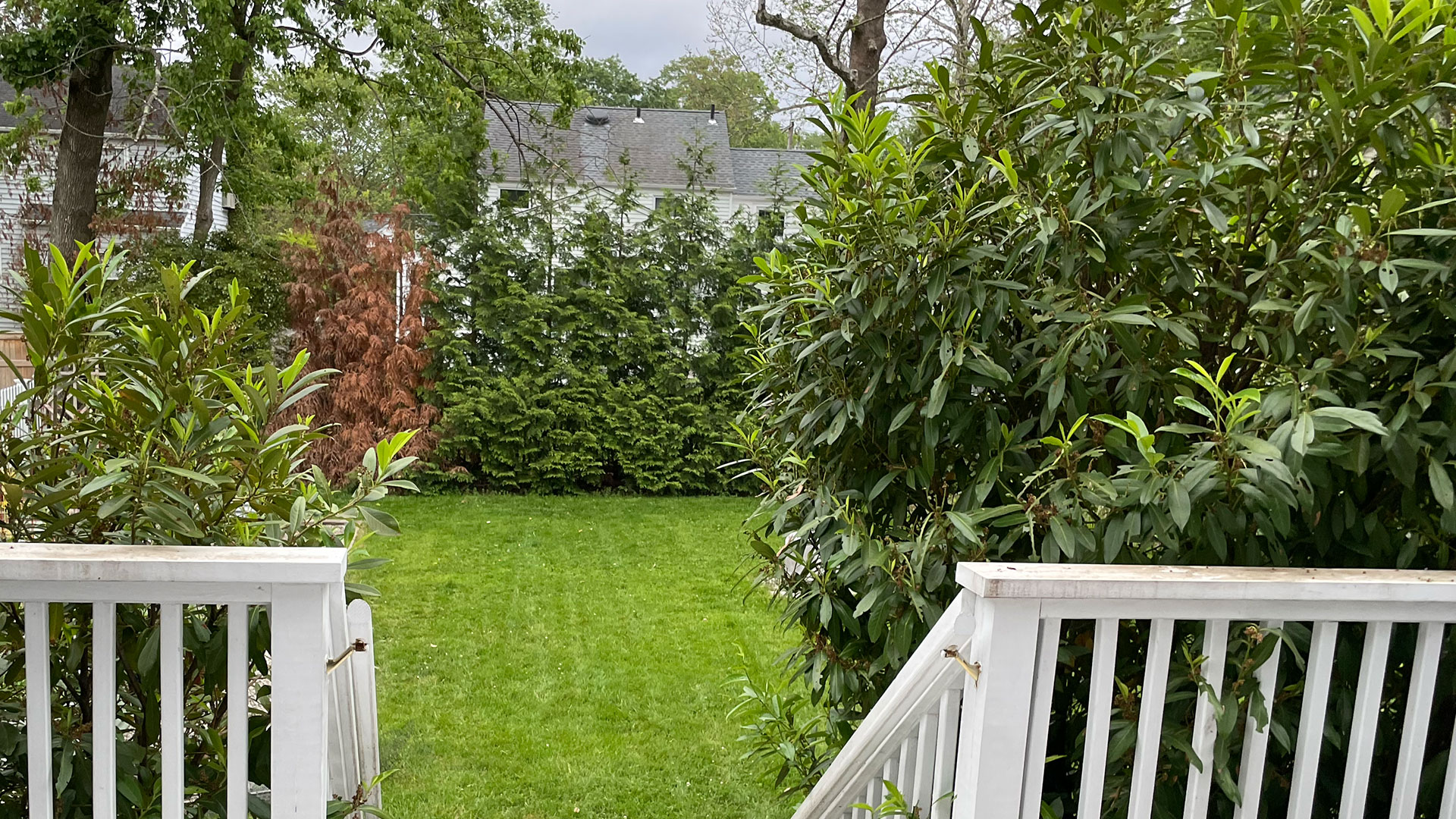

A few weeks ago I drove 3 hours north of NYC to a waterfall that sits on the back of a relative’s property, who was kind enough to let me drive up and record with my hydrophones. The location has so many features where the water changes speed and pitch as it moves across the rocks. The recording below is one of my favorite water flows from that day.
[soundcloud url=”http://api.soundcloud.com/tracks/5284388″ params=”show_comments=true&auto_play=false&color=ff7700″ width=”100%” height=”81″ ]I was surprised by the low frequency content because the water is not that deep, but it has really great low end gurgles. One of the key challenges of this type of recording is turbulence. It is relatively easy to overwhelm hydrophones when placing them in the flow of heavy currents.

I have yet to completely master the technique, and I suspect I am going to have many near-misses in my continued experiments with hydrophones, but luckily for me, this one turned out okay.
Recording Geek Note: Rig consists of Aquarian h2a hydrophone tracked to a Sound Devices 744T at 24/96. I was also trying not to take my 744 for swim while recording!
Leave a Reply

Mountain Lake Biological Station

Bird Deck

[…] This post was mentioned on Twitter by Michael Raphael, Nagrit SRL. Nagrit SRL said: RT @sepulchra: new fieldsepulchra blog post, under waterfalls: http://bit.ly/b82Vl8 […]
Hi Michael,
Could be that the main mode of pickup was via the floor of the waterfall rather than directly though the water. Or the frequency response of the hydrophone is low end heavy which it looks like given the response above 5khz. Ive found shallow water if confined will tend to over emphasize the lows, something like a rain barrel can be used to confirm this. – Did you throw the hydro in or use a boom pole? -Hydrophone technique isn’t discussed much from what I’ve seen in the forums.
Hey Mike,
they were suspended in the waterflow . . . keeping of the hydrophone on the surface generally introduces a healthy amount of unwanted noise.
I have exactly the same hydrophone (in fact used to have 2). I dropped the remaining one into a large outdoor fish pond today which has an oxygen pump blasting out air. Sounds remarkably similar to your recording. I hoped for a much more clean sound with a brighter and wider spectrum of underwater motion. Will have to experiment with placement / depth.
Have achieved good results with a stereo pair in rock pool eddies by the sea: swirls and shingle sounds. Lovely apart from the occasional collision with the rocks of sand which caused some awful clunks. Then one of them got snagged on a rock – impossible to free it, had to cut it free, sadly.
[…] Kliq’s Movements via Tonmagnet 158: Review of Horiso’s View (Breathe) via Tonmagnet 159: Recording of waterfalls using hydrophones via fieldsepulchra 160: Dave Seidel puts out a new […]
Hi Michael,
I’ve tried to listen to your recordings as I see them posted on the various groups…this one was particularly fun to listen to! Love the weird gurgling…
Cheers,
Erica
[…] Kliq’s Movements via Tonmagnet 158: Review of Horiso’s View (Breathe) via Tonmagnet 159: Recording of waterfalls using hydrophones via fieldsepulchra 160: Dave Seidel puts out a new […]